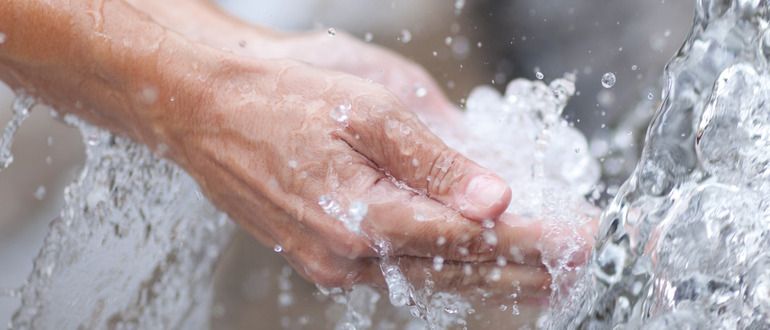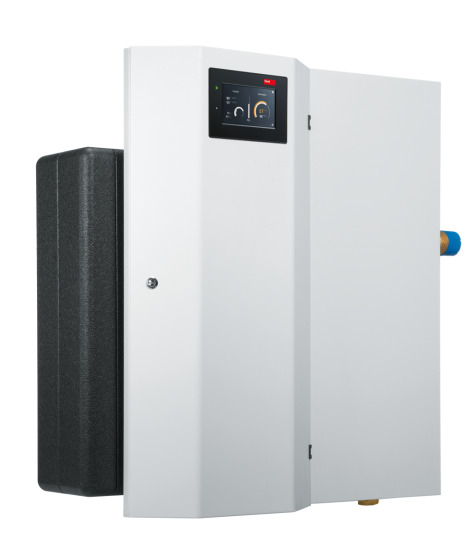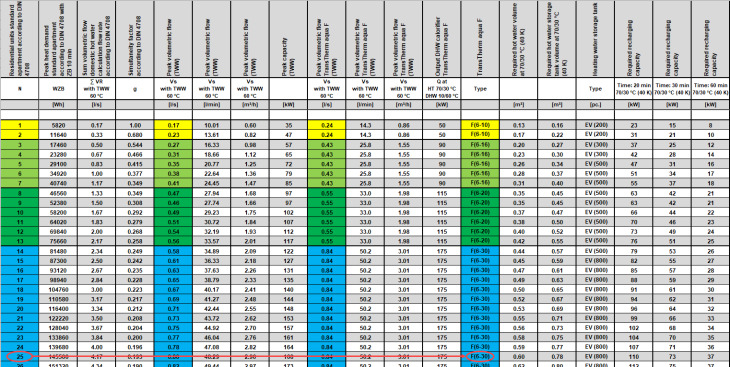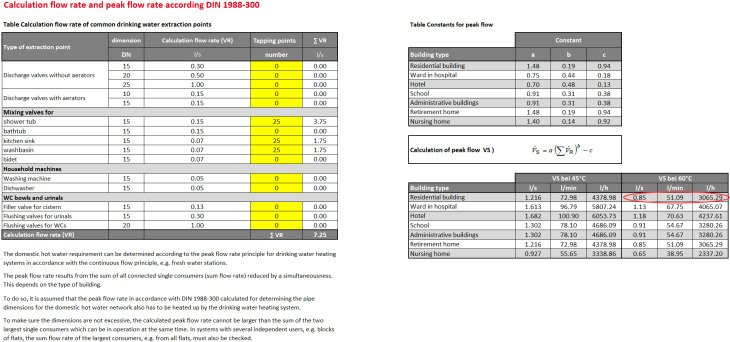Hoval domestic hot water systems: hygienic, scalable and easy to plan

Hoval domestic hot water systems: hygienic, scalable and easy to plan
Hoval domestic water systems – Maximum efficiency in building services engineering
- Blog
- End customer - Investor
The provision of perfectly hygienic and energy-friendly heated domestic hot water is a key issue for residential buildings, hotels, offices and commercial buildings. With fresh water stations and buffer storage solutions, Hoval offers solutions that make planning particularly easy. Specialist planners and installers who value implementation in compliance with standards and reliable function will find tailor-made concepts for domestic hot water heating at Hoval.
Hoval supports you with systems, practical tools and comprehensive planning documents. The blog provides an overview of the planning and design of modern domestic hot water systems. Central system components, different solutions and the most important planning steps are explained.
You can find more in-depth information on the planning and design of modern domestic hot water systems in the blog “Professional design of hot water supply in energy-efficient buildings – technical principles, standards and practical examples”.
Fresh water stations (continuous-flow systems): High-performance and hygienic domestic hot water heating
Fresh water systems work according to the principle of heating on demand: domestic water is not stored, but only heated when it is actually needed. This is done via stainless steel plate heat exchangers that heat the domestic water. As no stagnant water is produced, the risk of legionella formation is reduced to a minimum. The integrated control ensures that the draw-off temperature always remains constant, and that the heat output is optimally adapted to the current demand.
Advantages at a glance:
- Need-based heating
- No stagnant water (in the fresh water station / charging station)
- Minimized legionella risk
- Constant draw-off temperature
Technical components and system design of fresh water stations
Hoval fresh water stations integrate several system components that ensure hygienic and efficient domestic hot water heating. The central component is a plate heat exchanger. Hoval relies on high-quality stainless steel plate heat exchangers – copper-soldered or welded stainless steel, depending on the water quality. The plate heat exchangers are designed accordingly so that the required target domestic hot water temperature is reliably reached at the fresh water station outlet, even at high flow rates and peak loads.
Additional information: How does a TransTherm aqua domestic water station work?
The TransTherm aqua uses a plate heat exchanger in conjunction with a variable-speed charging pump to heat the domestic water via hydraulically separate primary and secondary circuits.
The charging pump pumps the heating water through the primary side of the plate heat exchanger. In parallel to this, the cold domestic water (secondary medium) flows on the secondary side, which remains separate from the heating water due to the separation of the plates.
Using the counterflow principle, the domestic water is heated up to the desired temperature and flows directly to the draw-off point. The cooled heating water is then fed back to the heat generator.
The system is usually supplemented by a buffer storage tank, which serves as a heat accumulator for the heating water. This means that heat generation can be operated independently of the current domestic hot water consumption.
Sensors built into the TransTherm aqua detect when a draw-off takes place. The TopTronic E-FW controller – installed as standard in all domestic water stations in the TransTherm aqua series – then starts the pump and regulates its output precisely according to the transmitted throughflow data. This not only ensures a constant draw-off temperature, but also reduces the power consumption of the fresh water station to a minimum. The Hoval control system allows straightforward integration of the system into the building management system and monitors all relevant system parameters for reliable and needs-based operation.
Key components of the fresh water station at a glance:
- Plate heat exchanger
- Speed-controlled pump
- Temperature and flow rate sensors
- TopTronic E-FW controller for optimum control

Figure: TransTherm aqua F fresh water station
Buffer storage solutions: efficient and flexible domestic hot water heating for demanding requirements
Hoval buffer storage solutions combine the advantages of a storage tank solution with those of continuous flow heating. The systems are particularly suitable for central domestic hot water heating in buildings with high draw-off rates or pronounced load peaks – for example in hotels, sports facilities or blocks of flats.
In contrast to the fresh water station, the domestic water is stored in a storage tank but is not kept at a constant temperature. Instead, heating takes place as required via the buffer storage module.
Additional information: stratified storage and demand-based heating in the domestic water storage tank
During draw-off, cold domestic water is fed through the heat exchanger, where it is heated indirectly via the heating water and then admitted into the upper stratified zone of the storage tank.
This mode of operation enables optimum temperature stratification in the cylinder, so that larger quantities of perfectly hygienic hot water are available at all times. Demand-based, indirect heating and precise stratified storage reduce the risk of legionella proliferation, as it avoids keeping large volumes of water warm at all times.
For hygiene reasons, however, it must be ensured that the system is regularly heated to at least 60 °C and that stagnation times are kept as short as possible.
Advantages of the buffer storage solution at a glance:
- High security of supply even at peak loads
- Optimized temperature stratification in the storage tank
- Flexible use for a wide variety of requirement profiles
Additional information: the “classic” storage tank domestic water heating
In addition to the dynamic solutions of fresh water stations and buffer storage solutions, the traditional principle of storage tank domestic water heating (storage tank calorifier) is still available.
Here, domestic water is stored in a hot water storage tank and kept at a constant temperature by heating water via a permanently installed heat exchanger (e.g. pipe coil). The heated water is available at all times, but can stagnate in the storage tank over a long time.
Relevant for planning! Continuous-flow or buffer storage solution?
A key aspect when planning the domestic hot water supply is the choice between a continuous-flow system and a buffer storage solution. The specific building requirements and user behaviour or comfort specifications are the decisive factors. While the continuous-flow system is particularly suitable for applications with critical hygiene conditions. and variable requirements, the buffer storage solution is particularly recommended for buildings with high or highly fluctuating hot water consumption.
- Continuous-flow systems offer maximum hygiene, as the domestic hot water is only heated when required and no stagnant hot water is produced. They are ideal for applications with high hygienic requirements for domestic water and ensure a constant draw-off temperature thanks to precise control.
- Buffer storage solutions are characterized by constant draw-off capacities (temperature and quantity) at partial and peak loads.
Planning and configuration: step-by-step
Specialist planners benefit from Hoval systems right from the planning phase. First, the building type and hot water demand are determined. The decisive factor here is whether it is a single-family home, a block of flats, a hotel or an office building, and how many people and draw-off points are to be supplied.
The specifications from DIN 1988, DIN 4708 and the country-specific domestic water regulations are used for the design. These define minimum temperatures, requirements for legionella protection and the necessary design parameters.
The actual system selection is based on the specific requirements of the project. Fresh water stations are particularly suitable for the highest hygiene requirements and constant draw-off capacities. Buffer storage solutions are ideal for systems with low partial load and high peak demand for domestic hot water, as they combine the advantages of a storage tank with hygienic continuous-flow heating.
Good to know: Hoval provides a design program for dimensioning the system. All technical data sheets, P&I diagrams and building information modelling (BIM) data that facilitate integration into the system technology can also be found here.

Figure: Table for buffer storage tank and domestic hot water configuration
The most important planning steps at a glance:
- Determine the building type and hot water demand
- Take account of fundamental planning principles and standards
- Select a suitable system (fresh water station or buffer storage solution)
- Record relevant design parameters
- Design and dimensioning with Hoval tools or Hoval catalogue
- Plan integration into the system technology
The most important design parameters at a glance:
Various parameters must be taken into account for the practical design of a domestic hot water system in compliance with the standards. Different calculation methods and guidance values are used depending on the type of building and usage scenario:
1. Dimensioning according to N-number (standard apartment according to DIN 4708):
The N-number (standard apartment) is based on what is called the standard apartment, which is defined as a 4-room apartment with 3.5 persons, a bathtub, a washbasin and a kitchen sink.
- This method is particularly suitable for residential buildings with several similar residential units.
Additional information: standard apartment as the basis for calculating requirements in residential buildings
A “standard apartment” is a standardized calculation variable and serves as a basis for the design of domestic hot water heating systems. It represents an averagely equipped apartment with:
- Kitchen
- 1 bathroom (with bathtub or shower, washbasin, toilet)
- Approx. 3 – 4 people
The standard apartment forms the basis for calculating the hot water requirement in blocks of flats and larger residential complexes. The number of standard apartments in the building is used for dimensioning the storage tank size, heat exchanger capacity and draw-off capacity.
Practical tip: You can find the exact definition and assumptions for the standard apartment in the technical planning documents. In special cases (e.g. luxury apartments, many bathrooms), an individual needs analysis is recommended.
2. Configuration according to peak flow rate (DIN 1988-300):
The hot water peak is determined in m³/h, l/h, l/min or l/s depending on the consumers. A relevant parameter is, for example, the number of all domestic hot water consumers (draw-off points), such as showers, bathtubs, washbasins, kitchen sinks, etc.

Figure: Calculated flow rate and peak flow rate according to DIN 1988-300
3. Other important design parameters:
- Desired domestic hot water temperature
- Cold water temperature when entering the domestic hot water heating system
- Flow temperature of the heating system
- Available heat output
Legal requirements & standards
Hoval components comply with the legal requirements and standards.
Hoval – future-proof solutions for every application
Hoval domestic hot water systems offer specialist planners and building operators an optimum solution for all building sizes and requirement profiles. They combine hygiene, energy efficiency and flexible application options in one system. Thanks to integrated control and sophisticated technology, they are simple and reliable to plan, operate and maintain.
Your Hoval contact will be happy to provide you with further information and individual consulting.